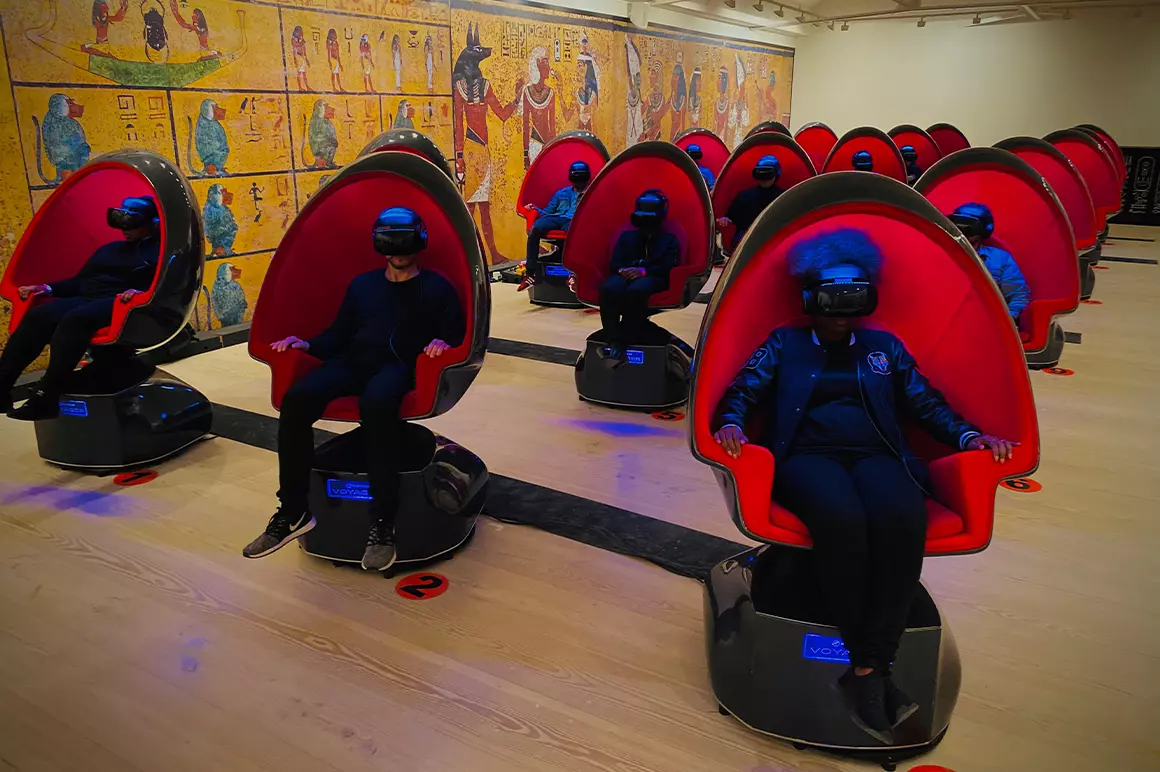At a demo of a VR experience that was part of last year’s “Tutankhamun: Treasures of the Golden Pharaoh” exhibit in London, John Kellogg didn’t just learn about the discovery of King Tut’s tomb, he felt like he experienced it just like British explorers encountered it in 1922. Sitting in a Positron Voyager virtual reality (VR) chair, an egg-shaped seat designed to create a cinematic experience, and equipped with an HP VR backpack to allow free motion, Kellogg felt as though he was moving through the tomb, shifting and turning in the Voyager chair while exploring true-to-life digital recreations of ancient artifacts that seemed real enough to touch.
Kellogg, a vice president at the audio and media technology company Xperi, has tested out dozens of VR setups. But the Tutankhamun experience blew him away.
“It’s like being in a movie, observing what’s going on,” he says.
When the pandemic hit a few months later, destination VR experiences — known as location-based VR — saw a downturn just like every other kind of out-of-home entertainment. But now, location-based VR is roaring back in major cities, offering excitement and adventure to people who are ready to leave home and have new experiences again, but may not be comfortable traveling too far. The market for location-based VR is expected to grow by 30% in the next five years, with new experiences popping up at entertainment centers, VR arcades, indoor theme parks, and even retail stores.
“We’re seeing pent-up demand for being able to get together with family and friends and do something only possible in VR, like being in the middle of LA and feeling like you’re scuba diving, or getting together and flying with dragons,” says Joanna Popper, HP’s global head of VR for location-based entertainment.









